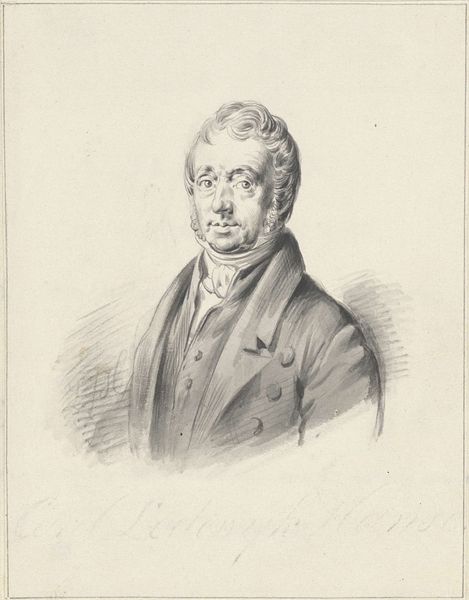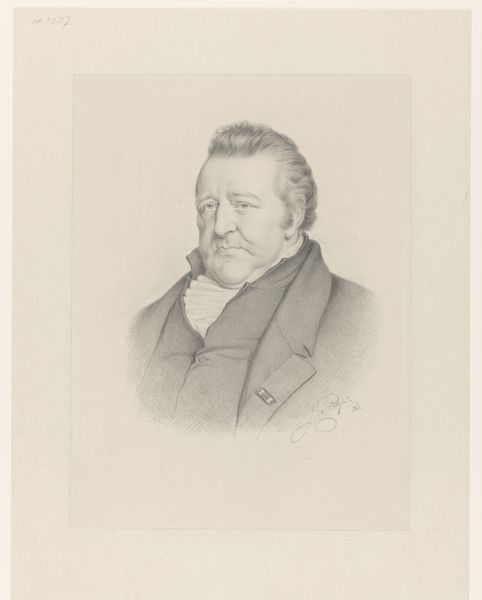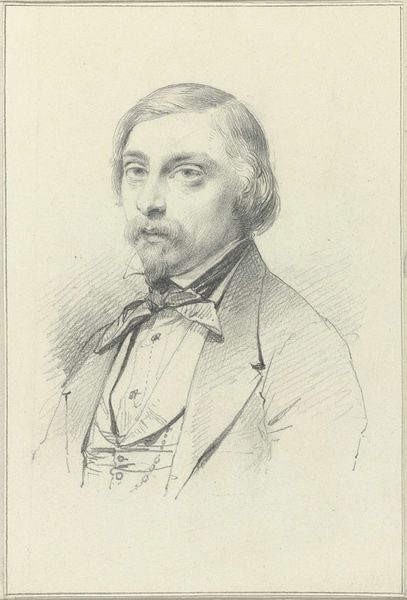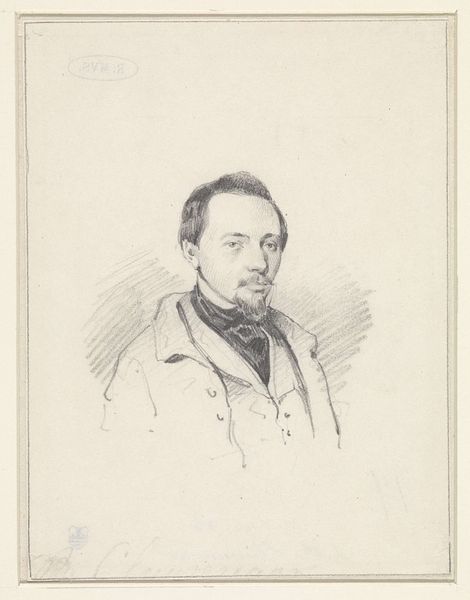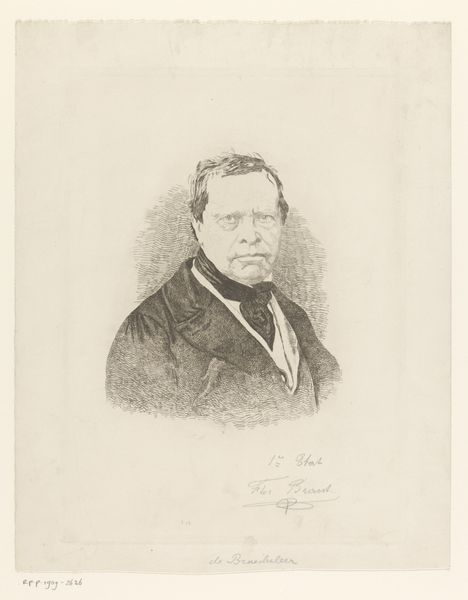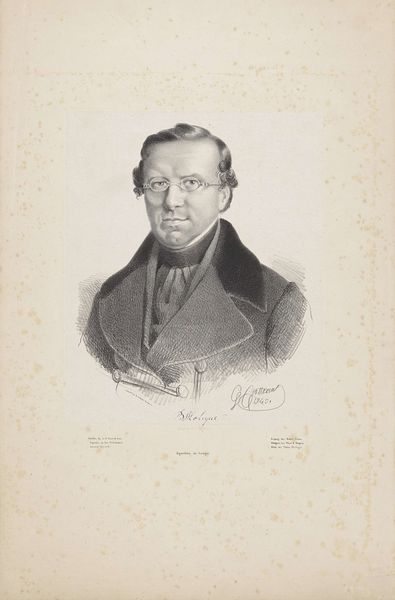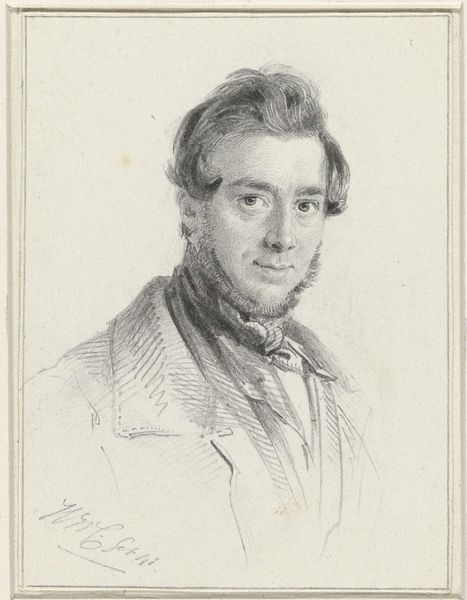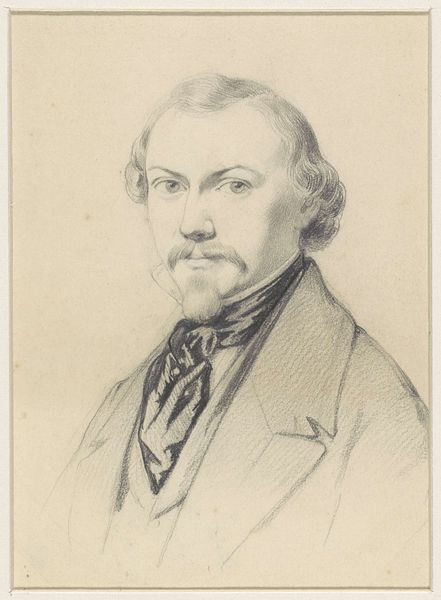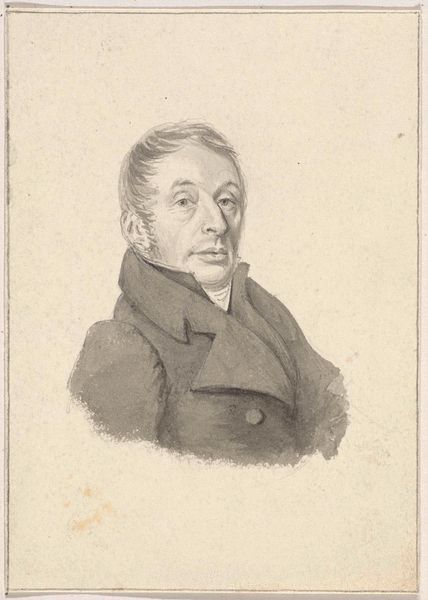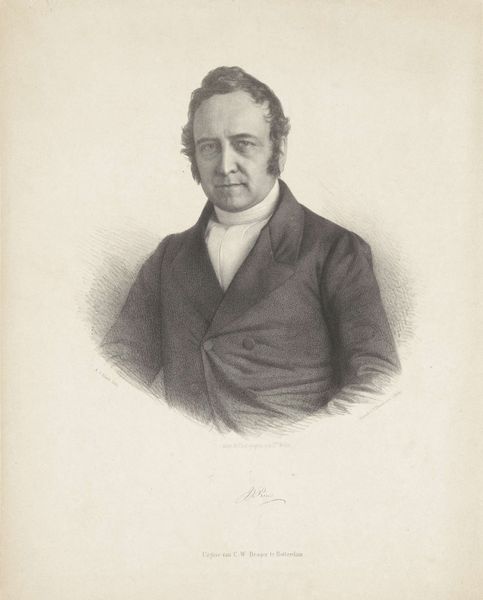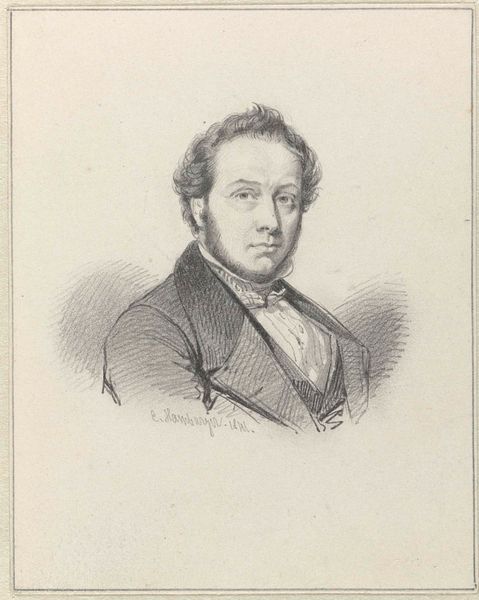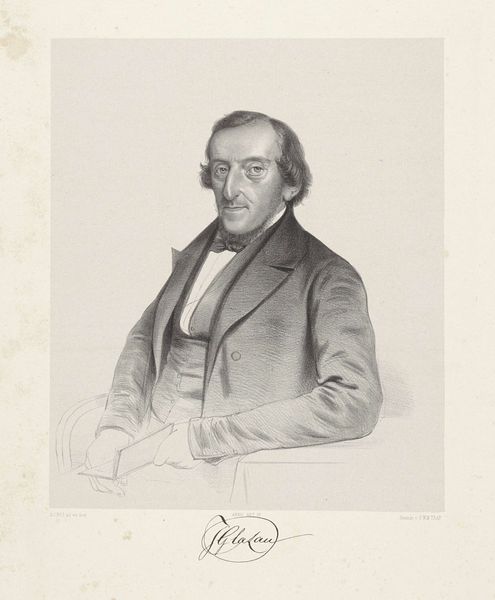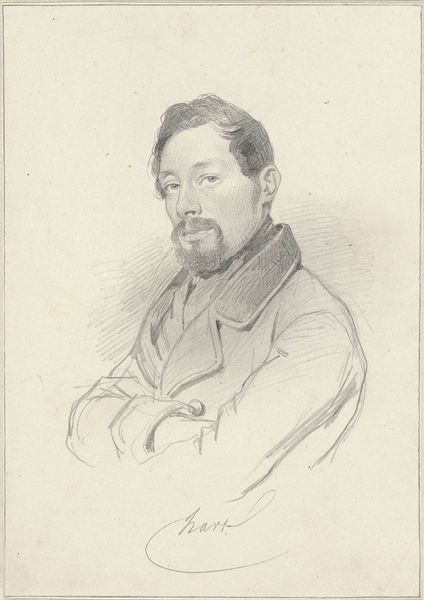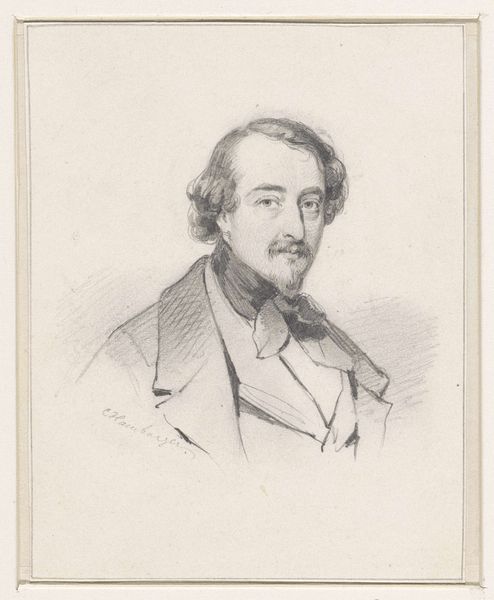
drawing, pencil
#
portrait
#
pencil drawn
#
drawing
#
facial expression drawing
#
light pencil work
#
pencil sketch
#
old engraving style
#
portrait reference
#
pencil drawing
#
pencil
#
limited contrast and shading
#
portrait drawing
#
pencil work
#
realism
Dimensions: height 112 mm, width 81 mm
Copyright: Rijks Museum: Open Domain
Curator: Welcome. Before us hangs "Portret van Johannes Hari II," created between 1832 and 1849. It is a pencil drawing, currently residing here at the Rijksmuseum. Editor: It's a strikingly gentle image. The limited shading almost lends the subject an ethereal quality. A ghost in the making? Curator: Consider the social conditions under which such a portrait would be commissioned. Johannes Hari, likely a member of the bourgeoisie, is presented in a style of realistic, almost academic portraiture, suggesting a desire for a specific kind of historical representation, in order to assert status. This approach reflects power dynamics of 19th-century European society. Editor: Precisely. The tools -- pencil and paper -- readily available but utilized with considerable skill, speak volumes. The artist is working, transforming modest materials into an object of cultural value for Mr. Hari. Was the labor fairly compensated? What was the social position of the artist? Curator: Those are vital questions, bringing us into the realm of labor and art production. Considering that, we might see the understated nature of the pencil medium, along with that somewhat… indeterminate facial expression as indicative of anxieties of class identity at the time. The ‘haves’ want it both ways, understated class assertion and raw dominance! Editor: And to go further, consider the paper. Was it handmade or machine-made? Its materiality influences not just the artistic process but the economic narratives surrounding its manufacture and consumption. Was the paper Dutch made and impacting their local labor market, or imported? Every mark reflects choices made by both artist and patron, and those choices reflect the materials available at the time. Curator: Yes, viewing the image within the economic context brings attention to aspects that could otherwise pass unobserved. This pushes us toward interrogating all aspects of artistic production through different theoretical perspectives! Editor: It encourages an enriched understanding of production and representation as parts of that complex, shifting reality. Curator: Precisely. Art challenges assumptions we carry within ourselves while exposing structural social forces. Editor: I find myself newly drawn into the subject's mild expression. Thank you!
Comments
No comments
Be the first to comment and join the conversation on the ultimate creative platform.
